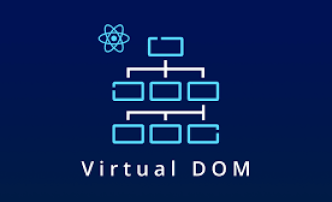Declarative Syntax:
React utilizes a declarative syntax, making it easier to describe how your UI should look based on its state. This makes code more predictable and readable.
React Native:
React can be used to build not only web applications but also mobile apps using React Native. This allows for code sharing between web and mobile platforms.
Large Ecosystem:
React has vast ecosystem of libraries and tools, including Redux for state management, React Router for routing, and many others. This ecosystem simplifies the development process and offers solutions to common challenges.
JSX
One of the defining features of React is JSX, which stands for JavaScript XML. JSX is a syntax-extension for JavaScript that allows us to write HTML like code within your JavaScript files. This syntax makes it easier to define and render UI components.
Here's a simple example of JSX:
const element =
<h1>Hello, React !</h1> ;
In this code snippet, we define a variable element that contains JSX code. This JSX code represents an HTML element with the text "Hello, React!".
JSX makes it more intuitive to create and visualize the structure of your UI components. Under the hood, JSX is transformed into regular JavaScript code by tools like Babel React before it's rendered in the browser.
React Components
At the core of React development are components. React Components are building blocks of React application, representing different parts of the user interface. These can be as simple as a button or as complex as an entire page.
React components can be categorized into two main types: React Functional Components and React Class Component. In recent versions of React (specifically, React 16.8 and later), functional components are more commonly used because they allow developers to use state and lifecycle features through React Hooks, which we'll cover shortly.
React Functional Components
React Functional components are JavaScript functions that return JSX elements. They are easy to understand and test, making them a preferred choice for most use cases.
Here's an example of a functional component:
Function Welcome (Props) {
return<h1>Hello, {props.name} </h1> ;
}
export default Welcome ;
In this example, Welcome is a functional component that takes a name prop (we will learn React Props later here) and renders a greeting message.
export default Welcome; This line exports the Welcome component as the default export of this module. In a typical React project, you would have multiple components, and this line allows you to import and use the Welcome component in other parts of your application.
React Class Component
React Class Components are the traditional way of creating components in React. They are defined as ES6 classes and extend the React.Component class. React Class Components have their own state and lifecycle methods.
Here's an example of a class component:
class Welcome extends React.Component {
render() {
return <h1>Hello, {this.props.name}</h1> ;
}
}
In this code, Welcome is a class component that also renders a greeting message based on the name prop.
Choosing Between Functional Components and Class Components
With the introduction of React Hooks, React functional components have become the preferred choice for most developers due to their simplicity and flexibility. React Hooks allow functional components to manage state and perform side effects, which were previously exclusive to class components.
Now, let's explore some key concepts and features of React that will help you understand how to build more complex applications.
React Props
In React, you can pass data from a parent component to a React child component using React props. Props (short for properties) are a way to send information to child components, allowing them to display or manipulate that data.
Consider the following example:
function Welcome (props) {
return <h1>Hello, {props.name}</h1>;
}
const App = () => {
return < Welcome name = "Alice" /> ;
} ;
In this example, the Welcome component receives a name prop, which is set to "Alice" in the parent component (App). The Welcome component then displays a greeting message using this react prop.
React Props are read-only, meaning that child components should not modify the data passed through props. They are ideal for passing data that doesn't change within the component.
React State
While react props are used for passing data from parent to child components, react state is used to manage data that can change within a component. React State allows a component to keep track of information and re-render when that information changes.
React Hooks
React Hooks are way to use state and different other React features in functional components. They were introduced in React 16.8 and have since become a popular way to manage state and side-effects in functional components.
React Hooks allow developers to "hook into" React state and lifecycle methods from React functional components, making it easier to manage complex logic and side-effects.
React useState
The useState hook allows us to add state to your functional components. We've already covered its usage in the counter example earlier.
React useEffect
useEffect is a React hook used for side effects in functional components, allowing you to perform actions like data fetching or DOM manipulation after rendering. It runs after each render and can also clean up resources when necessary.
React useContext
useContext allows you to access the Context API. It enables you to consume context values within a functional component.
React useRef
The useRef hook creates a mutable ref object that can hold reference to a DOM element or a value that persists across renders. It's commonly used for accessing and interacting with DOM elements directly.
React useReducer
useReducer is a hook that offers an alternative to useState when dealing with complex state logic. It's often used for managing state transitions in a more predictable manner, especially for state objects with multiple sub-values.
To learn more details about other React Hooks, visit React's official documentation. React's hook system is designed to be flexible and composable, allowing you to mix and match hooks to suit your specific needs. It's one of the reasons functional components have become the standard in modern React development.
React Router
In most web applications, you'll need to handle navigation between different views or pages. React Router is the go-to solution for adding routing to your React applications. It allows you to define routes and render different components based on the URL.
React Router also provides more advanced features like nested routes, route parameters, and route guards, allowing you to build complex navigation structures.
React Forms
Forms are a fundamental part of web applications, and React provides a straightforward way to handle user input using controlled components.
In a controlled component, form elements like input, textarea, and select are bound to React state, and their values are controlled by React. This allows you to react to changes and validate user input easily.
React Error Boundary
React provides a feature called Error Boundaries to gracefully handle errors that occur during rendering, in lifecycle methods, or in constructors of any child component.
In React, error boundaries can be created using both class-based and function-based components (with hooks). If you're using a more modern React codebase, you might encounter error boundaries implemented as function components with the useErrorBoundary hook or the ErrorBoundary component from third-party libraries like react-error-boundary.
React Suspense
React Suspense is a feature that simplifies handling asynchronous operations and code-splitting in your React applications. It allows components to "suspend" rendering while waiting for data to load.
One of the most notable use cases of React Suspense is for loading data from a remote source.
React State Management
As your React applications grow in complexity, you may encounter challenges related to state management. While React provides local component states using useState and useReducer, you might need a more advanced state management solution for larger applications.
One popular state management library for React is Redux. Redux is predictable state container that helps you manage the state of your application in a centralized and predictable manner.
Redux is particularly useful when you need to share state between different parts of your application or manage complex data flows. It also offers a developer-friendly debugging experience through tools like Redux DevTools.
To use Redux, you'll need to install the redux and react-redux packages and set up actions, reducers, and a store. While it may seem complex at first, Redux provides a clear and organized way to manage the state of your application.
Getting Started with React
Now that you have a foundational understanding of React, you may be wondering how to get started with your first React project. Here are the basic steps:
Setting Up Your Development Environment - React with ASP.NET Core:
Before you can start building React applications, you'll need to set up your development environment. Here are the key components:
- Node.js: React relies on Node.js for package management and development tools. You can download it from the official Node.js website.
- Code Editor: Choose a code editor that you're comfortable with. Popular options include Visual Studio, Visual Studio Code, Sublime Text, and Atom. We will use Visual Studio 2022 for this short tutorial.
Create React Application - React with ASP.NET Core
From the Start window, select Create a new project.
Search for React, and then click on “Standalone JavaScript React Project” or “Standalone TypeScript React Project”, yes You can also use
TypeScript instead of Javascript for building React applications!
Name the application.
Now on the next window, if you want to build your application with ASP.NET Core Web API backend, check the “Add integration for Empty
ASP.NET Web API Project” option.
Click on Create now (It will take a moment to create the project).
Click Build > Build Solution to build the project.
Press F5, After a command prompt, you should see the base React app in front of you!
React Hosting
After you've developed your React application, you'll need to host it on a web server so that users can access it online. While there are various hosting options available, including paid services and cloud platforms, ASPNETCORE.NET is one of the best and always free.
ASPNETCORE.NET is a hosting platform that provides services for hosting ASP.NET Core, React, Angular, and Vue.js applications.
Summary

In this comprehensive guide, we've covered the fundamentals of React, from JSX and components to React state management, routing, error handling, and state management using Redux.
If you're interested in hosting your React application, ASPNETCORE.NET offers always free hosting plans for ASP.NET Core, React, Angular, and Vue.js applications.
So, whether you're just starting your journey in web development or looking to enhance your skills React is an excellent choice that opens the door to building modern responsive and feature-rich web applications.




